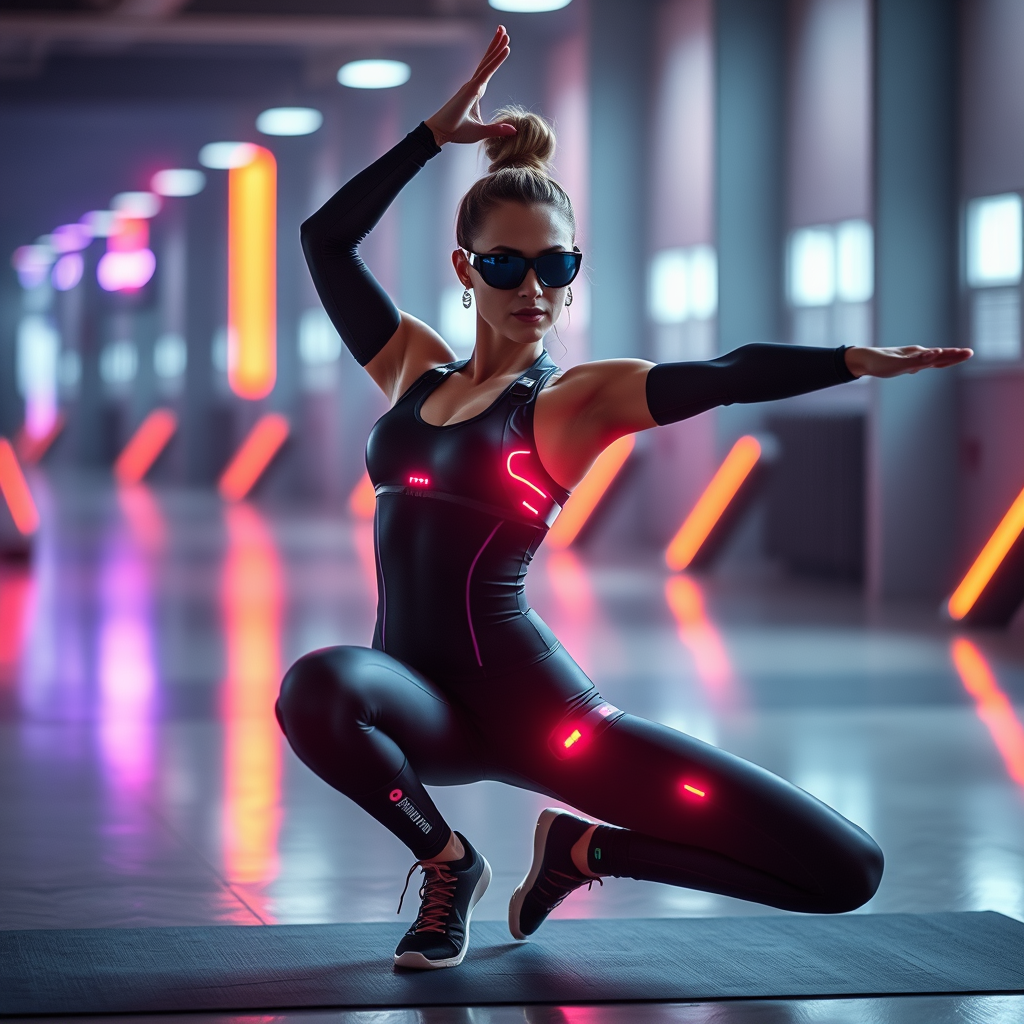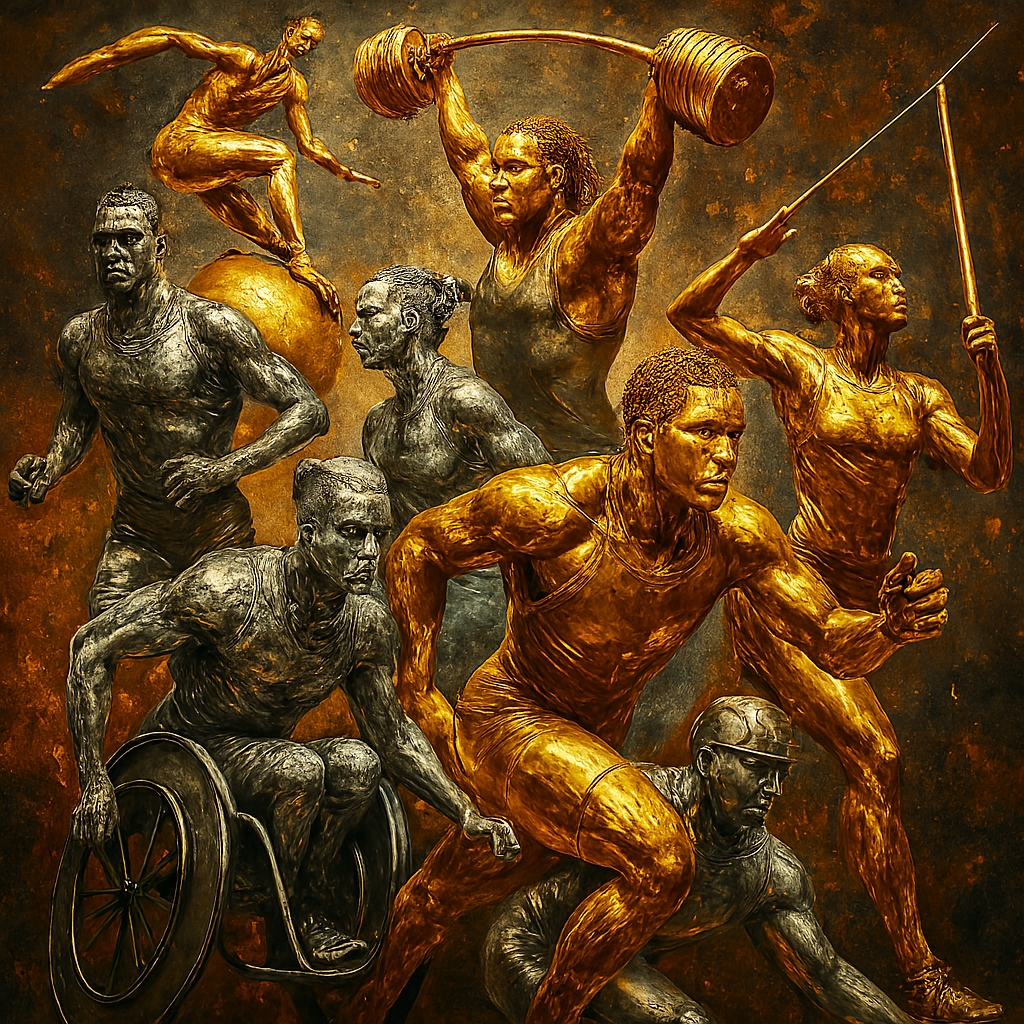From Pulse to Performance – The Rise of Biometric Intelligence
Beyond the Stopwatch – Sport’s Evolution into a Data-Driven Discipline
Biometric technology and Sport Biometrics have revolutionized the way athletes train, recover, and compete. It refers to the measurement of physiological and behavioral data and sports technology intelligence to assess performance. In sport, this includes heart rate, muscle activation, hydration, sleep, and cognitive load. The integration of biometric sensors into wearables has enabled real-time data collection. Coaches now use dashboards to monitor fatigue, readiness, and injury risk. Athletes receive personalized feedback based on their unique physiological profiles. Teams apply biometric insights to optimize tactics and substitutions.
Recovery protocols are tailored using sleep and stress metrics. The shift from intuition to data has redefined elite sport. Biometric systems are embedded in shoes, helmets, and clothing. AI platforms analyze trends and predict performance outcomes. The technology is used across disciplines, from football to swimming. It supports both physical and psychological conditioning. The future promises deeper integration with neural and genetic data. Sport is entering an era of precision and personalization.

Biometric technology and Sport Biometrics
Historical Evolution of Sports Technology
The use of technology in sport dates back to the 1960s with basic timing devices. Heart rate monitors were introduced in the 1970s for endurance athletes. Lactate testing became common in the 1980s to measure aerobic thresholds. GPS tracking emerged in the 1990s, transforming team sports. Accelerometers and gyroscopes entered training environments in the 2000s. Smart fabrics with embedded sensors appeared in the 2010s. AI-driven platforms began analyzing biometric data in the 2020s.
Each decade introduced tools that expanded performance analysis. The convergence of hardware and software accelerated innovation. Data collection moved from manual to automated systems. Visualization tools improved coaching decisions. Historical records became dynamic benchmarks. Technology shifted sport from reactive to anticipatory. Biometric systems now inform every aspect of athletic development. The timeline below outlines key milestones.
Timeline of Biometric Integration in Sport
| Decade | Innovation Introduced | Impact on Sport |
|---|---|---|
| 1970s | Heart rate monitors | Cardiovascular tracking |
| 1980s | Lactate threshold testing | Endurance optimization |
| 1990s | GPS tracking | Positional analysis in team sports |
| 2000s | Accelerometers and gyroscopes | Movement and impact analysis |
| 2010s | Smart fabrics and embedded sensors | Continuous physiological monitoring |
| 2020s | AI-integrated biometric platforms | Predictive performance and injury models |
Real-Time Monitoring And Intelligence
Real-Time Monitoring in Elite Sport
Wearable biometric devices allow continuous tracking during training and competition. Football players wear GPS vests to measure speed and distance. Swimmers use sensors to monitor stroke efficiency and oxygen saturation. Cyclists rely on power meters and heart rate monitors for pacing. Tennis rackets measure grip pressure and swing velocity. Combat athletes use impact sensors to assess force and reaction time. Motion capture systems analyze joint angles and gait.
Data is transmitted to cloud platforms for instant analysis. Coaches receive fatigue scores and readiness indexes. Athletes adjust intensity based on biometric feedback. Recovery is guided by sleep and hydration metrics. Training loads are personalized to reduce injury risk. Tactical decisions are informed by physiological data. Real-time monitoring enhances both performance and safety. It represents a shift from generalized to individualized sport.
Metrics In Sports
Physiological Metrics and Their Relevance
Biometric systems track a wide range of physiological variables. Heart rate variability reflects autonomic nervous system balance. Core temperature indicates thermal stress during exertion. Blood oxygen saturation reveals aerobic efficiency. Muscle activation patterns show neuromuscular coordination. Sleep quality affects cognitive function and reaction time. Hydration levels influence endurance and injury risk. Skin conductance measures emotional arousal. Respiratory rate tracks exertion and recovery. Blood glucose levels impact energy availability. Electrolyte balance affects muscle function. Hormonal markers indicate stress and fatigue. These metrics fluctuate with training, travel, and stress. Understanding them allows adaptive decision-making. Coaches use them to tailor programs. Athletes use them to optimize performance.
Key Physiological Metrics in Sport
| Metric | What It Measures | Why It Matters |
|---|---|---|
| Heart Rate Variability | Nervous system balance | Recovery and stress monitoring |
| Core Temperature | Internal body heat | Thermal regulation and performance |
| Blood Oxygen Saturation | Oxygen delivery efficiency | Endurance and aerobic capacity |
| Muscle Activation | Electrical signals in muscles | Coordination and fatigue detection |
| Sleep Quality | REM and deep sleep cycles | Cognitive function and reaction time |
| Hydration Levels | Fluid balance | Injury prevention and endurance |
Injury Prevention and Recovery Optimization
Biometric data plays a critical role in injury prevention. Fatigue metrics help identify overtraining risks. Joint stress analysis flags potential musculoskeletal issues. Muscle imbalance detection informs corrective exercises. Recovery protocols are tailored using sleep and stress data. Cold therapy and compression are timed based on feedback. Return-to-play decisions are data-driven. ACL rehabilitation uses gait symmetry analysis. Concussion protocols include cognitive tracking. Recovery is no longer passive — it’s actively managed. Biometric systems reduce downtime and improve outcomes. Coaches monitor readiness scores before training. Athletes adjust intensity based on recovery status. Injury risk models are built using historical data. Predictive analytics guide long-term health strategies. The result is safer, more sustainable sport.
Cognitive and Psychological Tracking
Biometric systems are expanding into psychological domains. EEG headbands monitor brainwave activity during training. Mood tracking apps assess emotional states. Reaction time tests detect cognitive fatigue. Stress levels are inferred from heart rate variability. Skin conductance measures anxiety and arousal. Coaches use this data to adjust training intensity. Athletes manage mental load with biofeedback tools. Sleep quality is linked to emotional resilience. Teams integrate psychological data into performance models. Mental resilience is now quantified and trained. Neurofeedback supports focus and decision-making. Emotional tracking informs recovery protocols. Cognitive metrics are used in concussion management. The fusion of physical and psychological data creates holistic athlete profiles. Sport is becoming mind-body integrated.
How Sport Biometrics Reshape Intelligence
Tactical Modeling and Team Strategy
In team sports, biometric data informs tactical decisions. Coaches analyze player exertion to manage substitutions. Positional heat maps are overlaid with fatigue scores. Training loads are adjusted based on recovery metrics. Game plans are built around biometric readiness. Football teams alter pressing intensity based on fatigue. Basketball rotations are optimized using movement efficiency. Tactical modeling includes physiological variables. Teams gain advantage through data intelligence. Substitution timing is guided by exertion data. Defensive strategies adapt to recovery status. Offensive patterns shift with energy availability. Biometric dashboards support in-game decisions. Coaches receive alerts on injury risk. Strategy becomes dynamic and responsive. Data transforms coaching from reactive to proactive.

Ethical Considerations and Data Ownership
The rise of biometric tracking raises ethical questions. Who owns the data — the athlete, team, or platform? Consent must be informed and voluntary. Privacy standards must be enforced. Athletes need education on data rights. Teams must balance performance with autonomy. Platforms must ensure data security. Over-monitoring can lead to psychological stress. Transparency is essential in data usage. Ethical frameworks are evolving with technology. Regulations vary across jurisdictions. Data misuse can affect contracts and careers. Athletes should have access to their own data. Coaches must avoid coercive practices. Trust is central to biometric integration. Sport must prioritize ethics alongside innovation.
Biometrics and Disability in Sport
Biometric technology is reshaping how athletes with disabilities train, compete, and recover. Wearable sensors help monitor muscle activation in prosthetic limbs. Heart rate variability and respiratory tracking support adaptive pacing strategies. Smart wheelchairs integrate biometric feedback for propulsion efficiency. Visual impairment sports use haptic and auditory biometric cues. AI platforms analyze movement patterns in para-athletes to prevent overuse injuries. Biometric dashboards are tailored to individual impairments, not generalized baselines.
Recovery protocols are adapted for neurological and musculoskeletal conditions. EEG and EMG sensors support training in cerebral palsy and spinal cord injury. Smart fabrics detect pressure points to prevent skin breakdown. Biometric data informs classification systems in Paralympic sport. Coaches use real-time metrics to adjust intensity and technique. Athletes gain autonomy through personalized feedback loops. Accessibility features in biometric platforms are improving, though gaps remain. Inclusive design is essential for equitable performance analytics. Biometrics are not just enhancing sport — they’re expanding who gets to participate.
Future Innovations in Biometric Sport
The next frontier includes neural feedback systems. Brain-computer interfaces may train cognitive patterns. Genetic profiling could inform injury risk and recovery. Smart implants may provide internal monitoring. Augmented reality could overlay biometric data during training. AI will refine predictive models. Wearables will become invisible and embedded. Data will be processed locally to reduce latency. Virtual coaching may use biometric avatars. Real-time feedback will guide technique correction. Biometric passports may track long-term health. Adaptive clothing will respond to physiological changes. Sport will become a laboratory of human potential. The athlete of the future will be biologically optimized. Precision will replace guesswork.
Cross-Disciplinary Impact
Biometric technology affects all sports disciplines. Football uses GPS and fatigue modeling. Tennis applies swing analysis and grip sensors. Swimming tracks stroke efficiency and oxygen data. Athletics relies on gait and joint analysis. Combat sports measure impact and reaction time. Cycling uses power meters and pacing algorithms. Rowing monitors muscle symmetry and hydration. Skiing tracks balance and core activation. Gymnastics uses motion capture for form correction. Baseball analyzes pitch velocity and shoulder stress. Rugby integrates impact sensors and recovery scores. Volleyball tracks jump height and landing forces. Biometric systems adapt to sport-specific needs. The table below summarizes applications.
Biometric Applications Across Sports
| Sport | Current Use of Biometrics | Future Potential |
|---|---|---|
| Football | GPS tracking and fatigue modeling | Neural feedback and tactical overlays |
| Tennis | Swing analysis and grip sensors | Cognitive load tracking and AR coaching |
| Swimming | Stroke efficiency and oxygen data | Real-time biomechanical correction |
| Athletics | Gait and joint analysis | Genetic-informed training protocols |
| Combat Sports | Impact sensors and reaction time | Emotion tracking and predictive defense |
| Cycling | Power meters and heart rate | Smart implants and adaptive pacing |
Integration with Artificial Intelligence and Machine Learning
Artificial intelligence has become the analytical engine behind biometric sport. AI algorithms process vast datasets from wearables and sensors. Machine learning models identify patterns in performance and recovery. Predictive analytics forecast injury risk based on historical trends. AI platforms generate readiness scores for training decisions. Neural networks analyze motion capture for technique refinement. Real-time feedback loops adjust intensity during sessions.
AI supports tactical modeling in team sports. Coaches receive alerts based on biometric thresholds. Athletes use AI-driven apps for personalized recovery plans. Machine learning adapts to individual physiology over time. Data accuracy improves with continuous input. AI reduces human bias in performance evaluation. It enables scalable analysis across large teams. The fusion of biometrics and AI marks a new era in sport.
Smart Fabrics and Embedded Sensor Technology
Smart fabrics embed biometric sensors directly into clothing. These textiles measure heart rate, respiration, and muscle activation. They eliminate the need for external devices. Athletes wear sensor-integrated shirts, shorts, and socks. Data is transmitted wirelessly to cloud platforms. Smart fabrics are washable and durable. They maintain comfort during high-intensity movement. Embedded sensors track posture and joint angles. Compression garments monitor blood flow and recovery. Temperature-sensitive fabrics adjust to thermal stress. Some textiles include hydration indicators. Smart shoes analyze gait and foot pressure. Helmets track impact force and head movement. The technology blends seamlessly into athletic wear. It represents the future of unobtrusive monitoring.
Biometric Feedback in Youth and Developmental Sport
Biometric tools are increasingly used in youth sport. They help monitor growth-related stress and fatigue. Coaches use data to prevent overtraining in adolescents. Wearables track hydration and sleep in young athletes. Motion analysis supports skill development. Recovery protocols are tailored to developmental stages. Biometric dashboards guide training volume. Parents receive reports on wellness and readiness. Injury risk is reduced through early detection. Cognitive metrics support focus and learning. Youth academies integrate biometric systems into curriculum. Data informs long-term athlete development models. Ethical oversight ensures responsible use. Education on data literacy is essential. Biometric feedback enhances safety and performance in youth sport.
Global Adoption and Accessibility Challenges
Biometric sport technology is expanding globally. Elite programs in Europe, North America, and Oceania lead adoption. Developing nations face infrastructure and cost barriers. Mobile platforms improve accessibility in remote regions. Open-source software supports low-cost integration. Partnerships with universities drive innovation. National federations invest in biometric research. Language localization improves usability. Cultural factors influence data acceptance. Privacy laws vary across jurisdictions. Accessibility depends on device affordability. Training is required for effective implementation. Global standards are emerging for data ethics. Equity in access remains a challenge. Biometric sport must be inclusive and scalable.

Biometric Sport in Rehabilitation and Clinical Settings
Biometric systems are increasingly used in sports rehabilitation. Physical therapists use motion capture to assess joint recovery. Wearables track range of motion during post-injury exercises. Muscle activation sensors guide neuromuscular re-education. Heart rate variability informs stress and recovery balance. Sleep tracking supports healing timelines. Gait analysis detects asymmetries after surgery. Concussion recovery includes cognitive and visual metrics. Hydration and nutrition are monitored for tissue repair. Biometric dashboards help clinicians adjust protocols. Data supports insurance and return-to-play documentation. Rehabilitation becomes personalized and adaptive. Athletes recover faster with targeted interventions. Clinical sport science merges with performance analytics. The boundary between rehab and training is dissolving. Biometric tools are central to modern recovery.
Environmental and Climate Adaptation Through Biometrics
Biometric data helps athletes adapt to environmental stressors. Core temperature sensors monitor heat exposure. Hydration tracking prevents dehydration in hot climates. Altitude training uses oxygen saturation metrics. Wearables adjust pacing based on thermal load. Smart fabrics regulate body temperature. Coaches modify intensity during heatwaves. Cold-weather gear includes circulation sensors. Wind resistance is measured in outdoor sports. UV exposure is tracked for skin protection. Climate-specific recovery protocols are developed. Biometric feedback informs travel and acclimatization schedules. Sleep and stress metrics adjust for jet lag. Environmental adaptation becomes data-driven. Athletes perform better across diverse conditions. Biometrics bridge physiology and geography.
Biometric Sport and Gender-Specific Insights
Biometric systems reveal gender-specific performance patterns. Hormonal fluctuations affect recovery and fatigue. Menstrual cycle tracking informs training loads. Female athletes benefit from tailored hydration protocols. Bone density metrics guide impact sports. Sleep patterns vary across genders. Injury risk models differ by physiology. Recovery timelines are adjusted for hormonal phases. Smart fabrics accommodate anatomical differences. Cognitive load tracking reveals gendered stress responses. Biometric dashboards include sex-specific baselines. Equipment design evolves with biometric insights. Coaching strategies adapt to gender data. Research expands into inclusive performance modeling. Gender equity improves through personalized analytics. Biometrics support precision across all identities.
Biometric Sport and Long-Term Athlete Development
Biometric data supports long-term athlete development (LTAD). Growth tracking informs training volume in youth. Recovery metrics guide seasonal planning. Injury history is logged for future risk modeling. Sleep and nutrition data shape developmental stages. Cognitive metrics support learning and focus. Biometric passports track career health trends. Coaches use dashboards to monitor progression. Training loads are adjusted across age groups. Talent identification includes physiological profiling. Biometric feedback supports multi-sport development. Transition phases are guided by readiness scores. Retirement planning includes wellness tracking. LTAD becomes data-informed and sustainable. Athletes benefit from lifelong performance insights. Biometrics redefine career trajectories.
Final Reflections – Sport’s Biometric Future
Biometric technology has transformed sport into a precision-driven discipline. It empowers athletes with real-time feedback and personalized insights. Coaches make smarter decisions based on physiological data. Recovery becomes proactive and adaptive. Injury prevention is guided by predictive analytics. Psychological metrics support mental resilience. AI and smart fabrics create seamless integration. Youth sport benefits from safer development models. Rehabilitation merges with performance science. Environmental adaptation becomes data-informed. Gender-specific insights improve equity and effectiveness. Long-term development is tracked across careers. Ethical frameworks ensure responsible use. Global adoption continues to expand. The future of sport is intelligent, inclusive, and anticipatory. Biometrics are no longer optional — they are foundational.
Conclusion – The Precision Era of Sport
Biometrics and technology have redefined the boundaries of sport. They transform how athletes train, recover, and compete. Data replaces guesswork with actionable insight. AI and smart fabrics create seamless feedback loops. Injury prevention becomes proactive and personalized. Psychological metrics support mental resilience. Tactical decisions are informed by physiological readiness. Youth sport benefits from safer development models. Global adoption continues to expand. Ethical frameworks guide responsible use. The athlete becomes a data-informed performer. Sport evolves into a precision-driven discipline. The fusion of biology and technology is irreversible. Future innovations will deepen this integration. The age of intuition is giving way to the age of intelligence. Precision is no longer optional — it’s foundational.
Fact Point Section – Biometric Sport at a Glance
- The first heart rate monitors were used in sport in the 1970s.
- GPS tracking revolutionized team sports in the 1990s.
- AI platforms now predict injury risk using biometric data.
- Smart fabrics embed sensors into athletic clothing.
- EEG headbands monitor brainwave activity during training.
- Hydration sensors help prevent heat-related injuries.
- Motion capture systems analyze joint angles and gait.
- Sleep quality directly affects reaction time and decision-making.
- Youth sport programs use biometrics to prevent overtraining.
- Recovery protocols are tailored using stress and fatigue metrics.
- Biometric dashboards guide substitution timing in team sports.
- Data ownership and consent are key ethical concerns.
- Wearables are evolving into invisible, embedded systems.
- Biometric passports may track long-term athlete health.
- Sport is transitioning from reactive to anticipatory performance models.
Join the Discussion
Biometric technology is reshaping sport from the inside out — but its future depends on how we use it. Should athletes have full control over their biometric data? How can we ensure ethical use without slowing innovation? What role should AI play in coaching decisions? If you’re a coach, athlete, analyst, or simply passionate about performance, your perspective matters. Share your thoughts on how data is changing the game. Have you used biometric tools in your own training or recovery? What challenges or breakthroughs have you experienced? Are we heading toward a future of hyper-personalized sport — or are we losing something human along the way?
#BiometricSport #PrecisionPerformance #AthleteData #SportsTechnology #AIInSport #SmartTraining #InjuryPrevention #RecoveryScience #WearableTech #FutureOfSport #CognitiveAthlete #EthicsInSport #PerformanceAnalytics #SportInnovation #DataDrivenAthlete















How Emotional Technology Reshapes And Helps Us Beyond 2025
[…] Ecological cognition means understanding tech as habitat. A cluttered interface creates stress. A clean layout fosters focus. A responsive design builds trust. These elements are not aesthetic—they are emotional. They shape how we move through digital space. […]